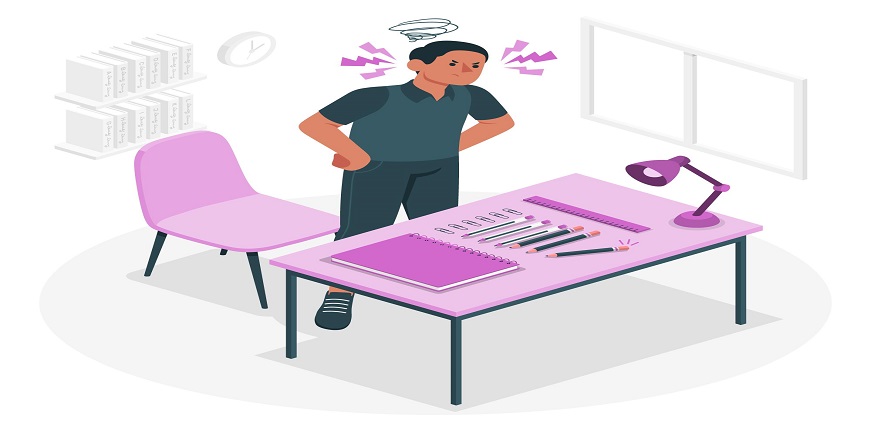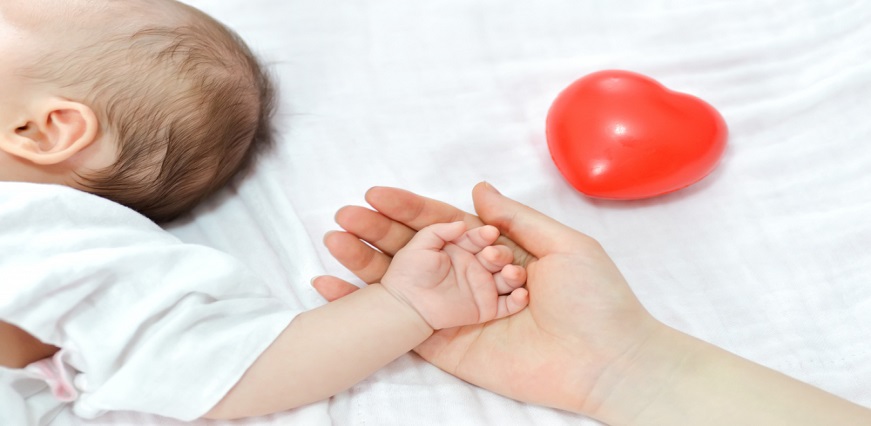Obsessive-compulsive disorder, also known as OCD, is a type of anxiety disorder that is characterized by obsessions and/or compulsions. Obsessions are recurrent, unwanted thoughts, images, or urges that are intrusive and cause distress or anxiety. Compulsions are repetitive behaviors or mental acts that a person feels compelled to do in order to relieve the anxiety caused by the obsessions. People with OCD typically have both obsessions and compulsions. However, it is possible to have only obsessions or only compulsions. OCD can range in severity from mild to severe. It is estimated that 1-2% of the population suffers from OCD. There is no single cause of OCD. Rather, it is thought to be caused by a combination of genetic and environmental factors. Treatment for OCD typically involves a combination of medication and cognitive-behavioral therapy (CBT). Prevention of OCD generally focuses on early identification and treatment of the disorder.
What is obsessive-compulsive disorder (OCD)?
Obsessive-compulsive disorder (OCD) is an anxiety disorder that is characterized by intrusive, unwanted thoughts (obsessions) and/or repetitive behaviors (compulsions). OCD can cause significant distress and impairment in daily functioning.
Obsessions are defined as persistent, uncontrollable thoughts, impulses, or images that are intrusive and cause distress or anxiety. Common obsessions include fears of contamination, harm to self or others, perfectionism, symmetry, and a need for things to be “just right.” Compulsions are defined as repetitive behaviors or activities of the mind that one feels obliged to perform in order to calm the distress brought on by the obsessions. Common compulsions include washing and cleaning; counting; ordering and arranging; hoarding; and checking.
OCD typically begins in adolescence or young adulthood, but can start in childhood or later in adulthood. The exact cause of OCD is unknown, but it is thought to be a combination of genetic and environmental factors. Treatment for OCD generally includes psychotherapy and medication.
Who gets obsessive-compulsive disorder (OCD)?
It is estimated that OCD affects 2.2 million adults in the United States (1). While the exact cause of OCD is unknown, there are several risk factors that may contribute to its development, including genetics, brain structure and function, and environmental factors (2).
OCD most commonly begins in adolescence or young adulthood, but can also develop in childhood or later in life (3). Men and women are affected equally by OCD (4).
Numerous signs and symptoms can be connected to OCD. Common obsessions include fear of contamination or germs, worries about making mistakes or being embarrassed, doubts about one’s memory or perception, and intrusive thoughts about violence or harm (5). Compulsions are repetitive behaviors or mental acts that an individual feels compelled to perform in order to relieve anxiety or discomfort. Common compulsions include hand-washing, ordering and arranging objects, counting, checking things, and excessive cleanliness (6).
OCD can significantly hinder daily functioning and create great distress. Individuals with OCD may avoid activities or situations that trigger their obsessions or compulsions. They may also become isolated and withdrawn from family and friends. In severe cases, OCD can interfere with work, school, and other important aspects of life (7).
If you think you or someone you know may have OCD, talk to a mental health professional for diagnosis and treatment. There are a number of effective treatments available for OCD that can help reduce symptoms and improve
What causes obsessive-compulsive disorder?
There is no one known cause of obsessive-compulsive disorder (OCD), though there are several theories. It is believed that OCD may be caused by a combination of genetic and environmental factors.
Some research suggests that OCD may run in families, which suggests that there may be a genetic component to the disorder. However, not everyone with OCD has a family member with the disorder, so other factors must also be involved.
Environmental factors that have been linked to OCD include stress, trauma, and infectious diseases. It is unclear how these factors may contribute to the development of OCD, but they may play a role in triggering the disorder or making it worse.
What are the symptoms of obsessive-compulsive disorder?
Obsessive-compulsive disorder (OCD) is an anxiety disorder that causes people to have intrusive, unwanted thoughts (obsessions) and to feel the need to perform certain rituals (compulsions) over and over again.
Symptoms of OCD can vary from person to person, but they typically fall into one of four categories:
1. Contamination/Mental Contamination OCD: This type of OCD is characterized by fears of contamination or becoming contaminated by germs, dirt, or other substances. People with this type of OCD may obsessively wash their hands or clean their homes in an attempt to ward off contamination.
2. Hoarding OCD: People with hoarding OCD obsessively hoard objects for fear that they may need them in the future. They may have difficulty throwing things away, even if those things are useless or clutter up their living space.
3. Symmetry/Ordering OCD: This type of OCD is characterized by a need for symmetry and orderliness. People with this type of OCD may obsessively arrange objects in a certain way or perform repetitive actions in an attempt to achieve a sense of orderliness.
4. Obsessive Thoughts/Intrusive Thoughts OCD: This type of OCD is characterized by unwanted, intrusive thoughts that cause anxiety or distress. These thoughts may be about harm coming to oneself or others, sexual content, or religious themes. People with this type of OCD may try to suppress these thoughts
Obsession symptoms
There are many different symptoms of obsessive-compulsive disorder (OCD), and they can vary from person to person. Some people with OCD have very mild symptoms, while others may have very severe symptoms.
The most common symptom of OCD is excessive worry or fear about a particular thing or situation. People with OCD often feel that they need to do something (such as washing their hands) over and over again in order to prevent something bad from happening. Other common symptoms of OCD include:
• Checking things repeatedly (such as locks, stoves, and light switches)
• Arranging things in a certain order or a certain way
• Counting compulsively
• Having intrusive thoughts or images that are hard to get rid of
• Avoiding certain places or situations because of fear or anxiety
If you have any of these symptoms, it’s important to talk to a mental health professional. They can help you figure out if you have OCD and develop a treatment plan.
Compulsion symptoms
Compulsion symptoms are the repetitive behaviours or mental acts that a person with OCD feels the need to do in order to try to relieve their anxiety. These can include things like washing their hands over and over, checking that doors are locked or appliances are turned off, counting, hoarding, or repeating words or phrases. For many people with OCD, these compulsions take up a lot of time and can interfere with work, school, and other activities.
What are examples of obsessive thoughts?
Obsessive thoughts are persistent, intrusive thoughts that cause anxiety and distress. They can be about anything, but commonly focus on themes such as germs, contamination, symmetry, and orderliness. People with OCD often feel the need to perform certain rituals or behaviors (known as compulsions) in an attempt to ease their anxiety or prevent something bad from happening.
Compulsions are repetitive behaviors that a person feels compelled to do in order to relieve anxiety or prevent a feared event. Hand washing, counting, checking, and cleaning compulsive behaviours are typical examples. People with OCD often realize that their compulsions are unreasonable or excessive but feel unable to control them.
OCD can have a significant impact on a person’s quality of life. Work, education, and personal relationships may all be affected. In severe cases, it can be completely debilitating. Fortunately, there is effective treatment available for OCD.
What are examples of compulsive behaviors?
There are many different types of compulsive behaviors that can be seen in individuals with OCD. Some common examples include:
-Excessively washing or cleaning one's hands
-Checking things repeatedly (e.g., locks, oven, stove)
-Arranging things in a symmetrical or perfect order
-Counting compulsively
-Hoarding objects
-Skin picking
-Hair pulling
How is obsessive-compulsive disorder (OCD) diagnosed?
Obsessive-compulsive disorder is diagnosed by a mental health professional using specific criteria in the Diagnostic and Statistical Manual of Mental Disorders (DSM). The DSM is published by the American Psychiatric Association and provides guidelines for diagnosing all mental disorders.
To be diagnosed with OCD, a person must have obsessions and/or compulsions that are time-consuming (more than one hour per day) or cause significant distress or impairment in functioning. The obsessions and compulsions must not be better explained by another mental disorder, medical condition, or the effects of a substance (e.g., medications, alcohol).
The obsessions experienced by people with OCD can be about anything; however, certain themes are common, such as contamination/germs, harm/safety, order/symmetry, and religiosity. The compulsions experienced by people with OCD are often repetitive behaviors or mental acts that the person feels compelled to do in order to relieve anxiety or prevent something bad from happening. Common compulsions include washing and cleaning, counting, checking, ordering/arranging, and repeating words or phrases.
With our offerings in line with government-mandated prices, Maxlab offers full body checkup packages that cover an exhaustive list of tests for a comprehensive diagnosis of your health. Choose from a range of health test packages based on your needs.
What treatments are available for obsessive-compulsive disorder (OCD)?
There are a number of different treatment options available for obsessive-compulsive disorder (OCD), and the most effective approach may vary from person to person. Some commonly used treatments for OCD include:
Cognitive-behavioral therapy (CBT): CBT is a type of therapy that can help people learn to recognize and change negative thinking patterns and behaviors. CBT has been shown to be an effective treatment for OCD.
Exposure and response prevention (ERP): ERP is a type of CBT that involves exposure to the things that trigger your OCD symptoms, without engaging in the compulsive behaviors that you typically use to relieve anxiety. This can help you to gradually become less afraid of your triggers and more able to resist your compulsions.
Medication: There are several types of medications that can be used to treat OCD, including antidepressants, anti-anxiety medications, and antipsychotics. Medication can be an effective treatment for OCD, but it is often used in conjunction with other approaches such as CBT or ERP.
Self-help and support groups: There are many self-help books and support groups available for people with OCD. These resources can provide valuable information and support, but they should not be used as a substitute for professional help.
Risk factors of obsessive-compulsive disorder (OCD)
There are a number of risk factors for developing OCD, which include genetics, neurobiology, and environmental factors.
OCD has been found to run in families, suggesting that there is a genetic component to the disorder. Researchers have identified a number of genes that may be involved in the development of OCD.
Neurobiological factors also play a role in the development of OCD. imbalances in brain chemicals, such as serotonin, have been implicated in the disorder. Brain imaging studies have found differences in the structure and function of the brains of people with OCD compared to those without the disorder.
OCD development may also be influenced by environmental variables. Stressful life events, such as abuse or trauma, can trigger the onset of OCD symptoms.
Complications of obsessive-compulsive disorder (OCD)
Obsessive-compulsive disorder can lead to a number of complications, both physical and psychological.
Physical complications can include:
• Excessive skin picking or hair pulling, which can lead to infections or scarring
• Sleep problems from spending too much time on rituals or worrying
• Poor nutrition from avoiding certain foods due to fear of contamination
Psychological complications can include:
• Anxiety and depression from the constant worry and stress of OCD symptoms
• Relationship problems from the demands of the disorder or hiding symptoms from loved ones
• Isolation and social withdrawal due to embarrassment or shame about the disorder
Prevention of obsessive-compulsive disorder (OCD)
Obsessive-compulsive disorder (OCD) is a mental disorder in which people have unwanted and repeated thoughts, feelings, ideas, sensations (obsessions), or behaviors that make them feel driven to do something (compulsions). Often the person carries out the behaviors to get rid of the obsessive thoughts, but this only provides temporary relief. Being unable to carry out the rites might be quite stressful. A person with OCD can have either obsessions or compulsions, or both.
There are many possible causes of OCD, including genetics, brain chemistry, and personality traits. People with OCD may be more sensitive to stress and anxiety than others. OCD can stem from a variety of factors.
There are several effective treatments for OCD, including exposure therapy, cognitive-behavioral therapy (CBT), and medication. Some people may need a combination of these treatments to see the best results. It is important to work with a mental health professional to find the treatment that works best for you.
Prevention of OCD generally focuses on early identification and treatment of risk factors such as anxiety and depression. Identifying and treating these disorders early can help prevent the development of OCD or lessen its severity.













 7982100200
7982100200
























 To reach our help desk call 9213188888
To reach our help desk call 9213188888.png)
Comments